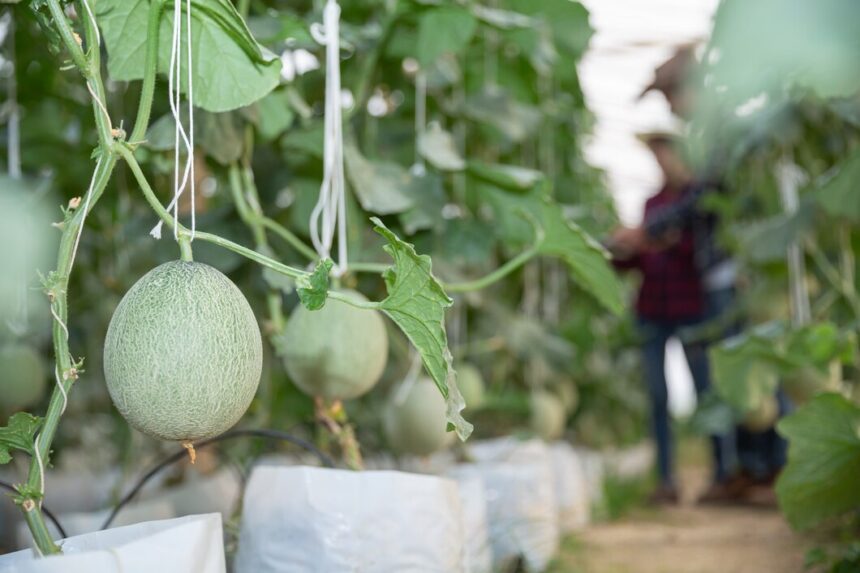Fusarium wilt is a devastating fungal disease that affects various plants, including melons. Identifying its early signs can help prevent its spread and mitigate its impact on your melon crop. Here are ten indicators to watch out for:
- Wilting Leaves: The first visible sign is often the wilting of leaves, starting from older leaves towards younger ones. This wilting can occur even when the soil has sufficient moisture.
- Yellowing Leaves: Leaves may begin to yellow, especially between the veins. This chlorosis is a result of the fungus blocking the vascular system, which hinders nutrient transport.
- Stunted Growth: Infected plants may exhibit slowed growth or fail to grow as vigorously as healthy plants. This stunting is a consequence of reduced nutrient uptake.
- Brown Vascular Tissue: If you cut open the stem of an infected plant, you may notice brown discoloration in the vascular tissue. This discoloration is a characteristic symptom of Fusarium wilt.
- Leaf Necrosis: As the disease progresses, affected leaves may develop necrotic spots or patches, turning brown and crispy.
- Fruit Rot: Melons affected by Fusarium wilt may show signs of premature rotting or decay, especially around the blossom end.
- Root Rot: In severe cases, the roots of infected plants may exhibit rotting symptoms. This can be observed by carefully inspecting the roots for discoloration and decay.
- Vascular Discoloration: Upon closer inspection, you may notice dark streaks or discoloration in the vascular tissue of the plant. This is a clear indication of Fusarium infection.
- Wilt During Hot Weather: Fusarium wilt symptoms often worsen during hot weather, as the fungus thrives in warm soil conditions.
- Plant Death: Ultimately, Fusarium wilt can lead to the death of the entire plant if left unchecked. Plants may collapse suddenly after showing prolonged symptoms of wilting and decline.
Prevention and Management
Preventing Fusarium wilt involves several strategies:
- Crop Rotation: Avoid planting melons in the same location year after year to reduce fungal buildup in the soil.
- Resistant Varieties: Use melon varieties that are resistant to Fusarium wilt.
- Soil Health: Maintain good soil health with proper drainage and balanced fertility to reduce stress on plants.
- Sanitation: Practice good garden hygiene by removing and destroying infected plants promptly.
By recognizing these early signs and taking preventive measures, you can protect your melon crop from Fusarium wilt and ensure healthy plant growth throughout the season.
Join 'Farmers Mag' WhatsApp Channel
Get the latest Farming news and tips delivered straight to your WhatsApp
CLICK HERE TO JOIN






